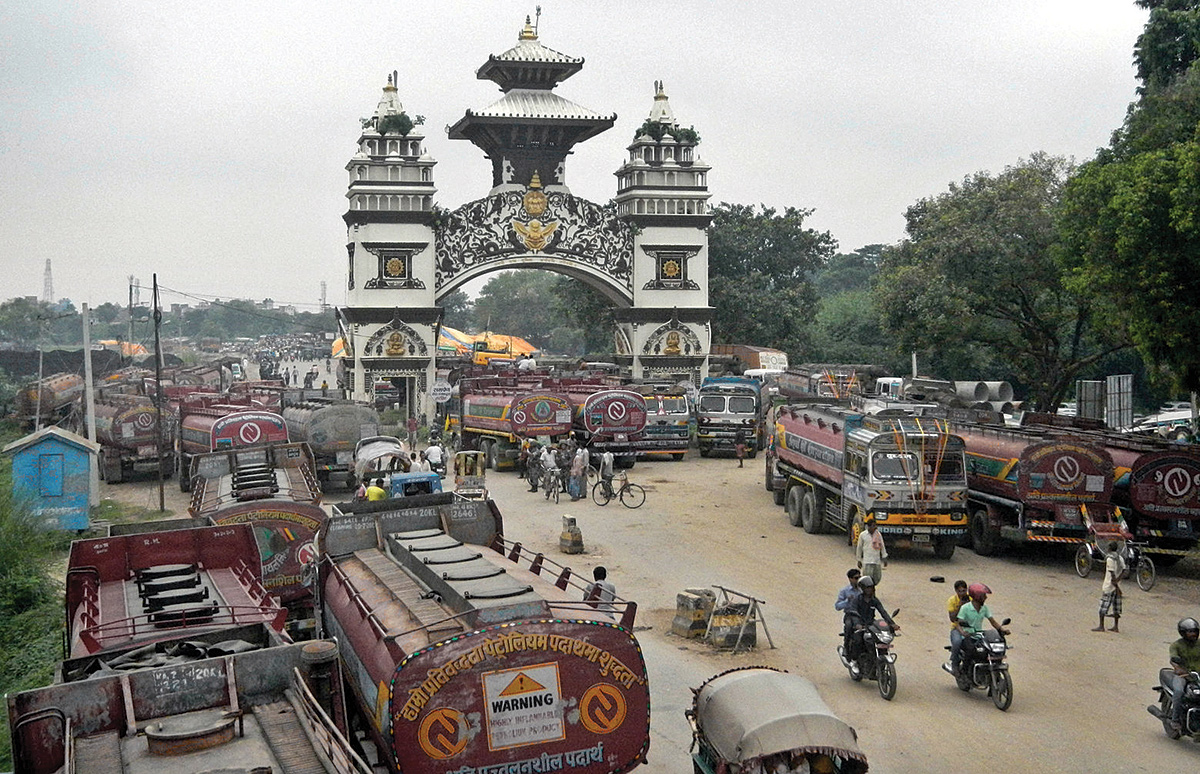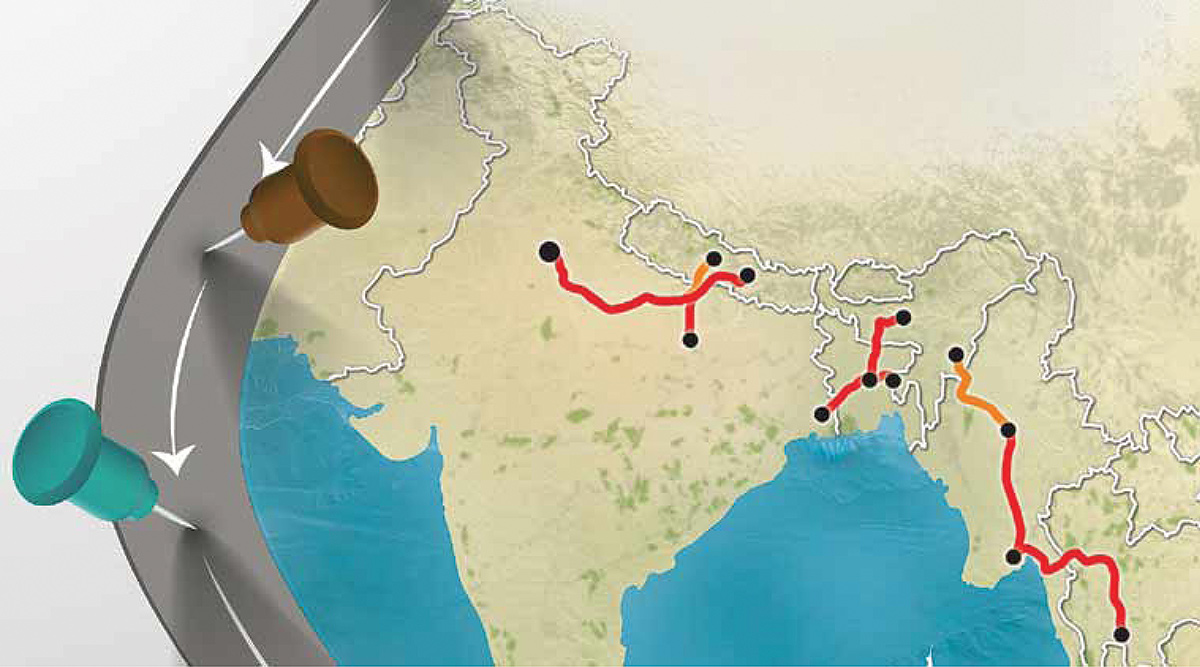
Facilitation of transit services is a compelling condition for enhancement of international trade of all countries. But, it is particularly important for landlocked countries since obstruction in transit postulates a fierce challenge to the external orientation of these economies. Being a landlocked country, the Nepalese trade and businesses till the mid of 20th century were confined to the neighbouring countries as physical connectivity beyond those countries were truncated in absence of transit facilities. The first legal debut on the transit services were made in 1923 through the peace and friendship agreement signed between the government of Nepal and the British-India government. This agreement provided limited transit right to Nepal through ports in India; transit services were granted for government owned goods for public services and no other goods of commercial nature both for private imports and export were allowed for transit.
The transit provisions then were laid on the treaty of trade and commerce in 1950 that allowed Nepal to use any seaports in India for export to and import from oversea countries. Similarly, the agreement stipulated harmonisation of customs duties between the two countries as quid-pro-quo provisions in order to avoid any deflection of goods while in transit. This arrangement were later revised in 1960 that limited the transit facilities to the use of the port of Kolkata and Haldiaand with both countries agreeing to pursue their own duty structures in order to keep the economies moving. The foundation of the current treaty of transit were laid in 1978 with the signing of three separate agreements on regulating trade and transit services between Nepal, India and beyond. The transit agreement with Bangladesh in 1976 and the agreement on transit transportation with PR China in 2016 also form milestones in the transit history of Nepal.
Transformative changes are taking place in the process and method of doing international trade. The development of modern transport and ICT infrastructures has made it possible to move traded goods and services from sellers to buyer’s premises at lowest costs. New approaches and concept on transit transportation are being mooted and reflected in international conventions and legal instruments. The new framework of transit services can be found in Revised Kyoto Convention-1998, Trade Facilitation Agreement of WTO-2013, and Vienna Program of Action-2014; these instruments focus on better customs and border agency cooperation and the development of better border posts, seaports and multimodal transport infrastructures.
There is no denying that modern infrastructure at the border, seaport and improvement of overall transport logistics is sine qua non for efficient transit services. Besides, partnering countries need to work in unison for developing a seamless transport system that requires interventions in the form of border regulations, private sector cooperation, and harmonization of documents and use of modern communication technologies in bringing all stakeholder’s together. Appropriate combination of hard as well as soft infrastructures is a must in order to improve efficiency in the transit system. A suitably devised transit system helps to minimise the cost of transaction.
The treaty of transit between Nepal and India provides for 15 transit corridors for truck traffic but only one for rail traffic through Raxaul-Birgunj border crossing. Customs offices are maintained on both sides of the border for use of transit traffic which may be revisited in context of rapidly growing road infrastructures within the country. In effect, only 6-7 border crossings from east to west are in operation for serving the transit traffic moving to and from the third countries. The minor border posts virtually remain non-operational from the perspective of transit movement of goods. Rather, Nepal should focus on developing connectivity through the rail mode of transport which is still in nascent stage in the country. Freight movement is relatively cheaper and safe while moving by rail in comparison to haulage by trucks. Better option would be in rationalising the number of transit border posts for truck movement and focus on adding rail transportation services to the major border posts like Kakarbhitta, Biratnagar, Bhairahawa, Nepalgunj and Mahendranagar. This would require developing appropriate infrastructures in those border posts for facilitating the movement of new stream of rail traffic.
Cargo clearances and onward movement between Nepal border and Kolkata port is heavily dependent on brokers including freight forwarders, shipping agents and customs house agents who often blame each other for their non-transparent operations and rent seeking behaviours. The administrative hassles and bureaucracy on clearance of transit cargo is heavy at the gateway port and this has become the reason for the brokers to extract hefty sum of money from Nepalese exporters and importers. This is one of the reasons behind reduced competitiveness of Nepalese products and high cost of imports. Reducing the dependency over these brokers and their agents would require a simple transit processing system based on electronic lodging of documents, e-payment and better communication linkages between regulatory agencies at the land frontiers and the gateway ports. Introduction of comprehensive guarantee system, allowances of undertakings by the government agencies, and vehicle and container tracking mechanisms are considered to be the appropriate measures in reducing the procedural costs.
Customs has prominent role in bringing down the cost of transaction and reducing trade costs. The role of customs officers rest on tripod, first they collect the revenue for the government, second control the unauthorised trade and trade of contraband goods and third facilitation of legitimate trade.
From trade facilitation perspectives, it is observed that Minister for Finance, Director General of Customs and customs officers under their control are always concerned about the sum of revenue collected since they have to meet the revenue target for the specific fiscal year. The higher authorities in the ministry of finance never question their customs officers as to how successful they have been in reducing border crossing time and transaction costs for traders. It is obvious that an efficient transit system rests on the actions of these key actors at the land border posts and seaports. Their supervisors at the center are also expected to reorient themselves to be facilitators of cross-border trade, away from the conventional wisdom of treating customs as revenue collecting machines.
 Purushottam Ojha is a former Commerce Secretary. He is now consultant at the World Bank.
Purushottam Ojha is a former Commerce Secretary. He is now consultant at the World Bank.
 Purushottam Ojha is a former Commerce Secretary. He is now consultant at the World Bank.
Purushottam Ojha is a former Commerce Secretary. He is now consultant at the World Bank.
Published Date: May 26, 2017, 12:00 am
Post Comment
E-Magazine
RELATED Economy




